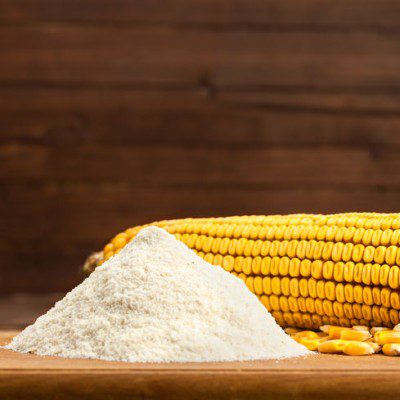Nutrition
Masa is nixtamilized maize. Compared to other grains, masa has an increased bioavailability of niacin improved protein quality, increased calcium levels, and reduced mycotoxins content.2
How masa works
Function of lime (alkaline)
- Alkaline aids in the dissolution of cell walls. It helps loosen the pericarp and facilitate its removal, which makes the production of a dough possible.3 A mixture of untreated maize flour with water results in porridge instead of a dough.
- Gelatinization of starch during alkaline cooking and steeping of corn is inhibited by the amylose-calcium interaction, this avoids sticky dough and helps keep the starch crystallinity.3 This also makes the final product crispy.
Function of gums4
- Water retention capability in masa is critical to make good quality tortillas, which are soft and can be rolled into a “taco” form without damage. Commercially, corn masa flour is formulated with gums and preservatives to retain water and improve physicochemical properties and textural characteristics. The gums increase the viscosity of masa. The optimum gum level is 0.5% (w/w) when producing corn masa flour.
Influence of oil5
- Autoxidation of oil causes off-flavors and off-odors of dry corn masa flours, which reduce consumer acceptability of the corn tortillas.
- The absence of oil didn’t affect dough stickiness or tortilla rollability. Low content of oil adversely and significantly affected the typical corn tortilla flavor. The presence of oil significantly improved tortilla firmness and chewiness.
Commercial production
There are several stages for corn masa flour production using nixtamalization process, the traditional method used.2 First, dried maize is soaked in a solution of water with lime, often with ashes mixed in. The grain is then cooked, steeped, drained, and rinsed multiple times. After which, the grain is then ground to make masa. Masa can be further dried into masa flour.
Masa can also be produced from an extruder.6 Dry, raw corn kernels are first ground in a cereal grinder. The resulting meal is then combined with calcium hydroxide in a powder mixer and fed continuously through an extruder along with a controlled flow of cold water. With this method, when the lime content is 0.2%, the resulting product is crispy and cooks fast. The extruded masa has the same organoleptic properties as lime heat-treated masa. The flour pasting properties (viscosity) and water absorption index are not significantly different from the traditionally prepared products.
Application
Both fresh masa and corn masa flour can be used to make tortillas. The advantage of corn masa flour is that it can be stored a long time without affecting its quality. Dry masa flour is rehydrated with 70% water to obtain fresh masa at the approximate consistency to make tortillas. Corn masa flour has a longer shelf life when stored at a lower temperature compared with a higher temperature storage due to the oil autoxidation. It has been reported that dry corn masa flour has a shelf-life of 23 weeks when stored at 25 oC, but only 9 weeks at 45 oC.5
FDA regulation
FDA approved folic acid fortification of corn masa flour. The approval allows manufacturers to voluntarily add up to 0.7 milligrams of folic acid per pound of corn masa flour, consistent with the levels of certain other enriched cereal grains.1
References
- “Press Announcements – FDA Approves Folic Acid Fortification of Corn Masa Flour.” U S Food and Drug Administration Home Page. 14 Apr. 2016. www.fda.gov/newsevents/newsroom/pressannouncements/ucm496104.htm. Accessed 15 May 2017.
- Gwirtz, Jeffrey A., and Maria Nieves Garcia-Casal. “Processing Maize Flour and Corn Meal Food Products.” Annals of the New York Academy of Sciences 1312.1 (2013): 66-75.
- Vargas, H. “Effect of Lime Content on the Processing Conditions of Cooked Maize Tortillas: Changes of Thermal, Structural, and Rheological Properties.” Optical Engineering 36.2 (1997): 348.
- Arambula, V.g., S.r.a. Mauricio, C.j.d. Figueroa, J. Gonzalez-Hernandez, and F.c.a. Ordorica. “Corn Masa and Tortillas from Extruded Instant Corn Flour Containing Hydrocolloids and Lime.” Journal of Food Science 64.1 (1999): 120-24.
- Vidal-Quintanar, Reyna Luz, Jane Love, and Lawrence Allan Johnson. “Role of Oil On Physical Properties Of Corn Masa Flours And Sensory Characteristics Of Corn Tortillas.” Journal of Food Processing and Preservation 25.1 (2001): 1-14.
- Bazúa, Carmen D., Rosaura Guerra, and Hank Sterner. “Extruded Corn Flour As An Alternative To Lime-Heated Corn Flour For Tortilla Preparation.” Journal of Food Science 44.3 (1979): 940-41.

